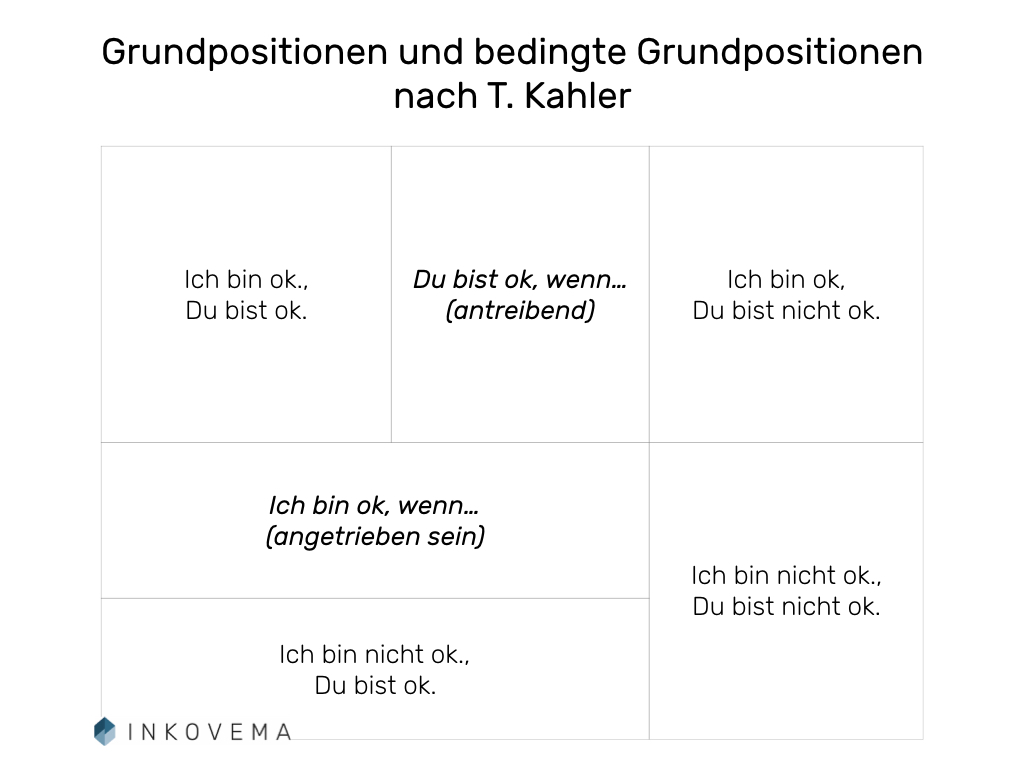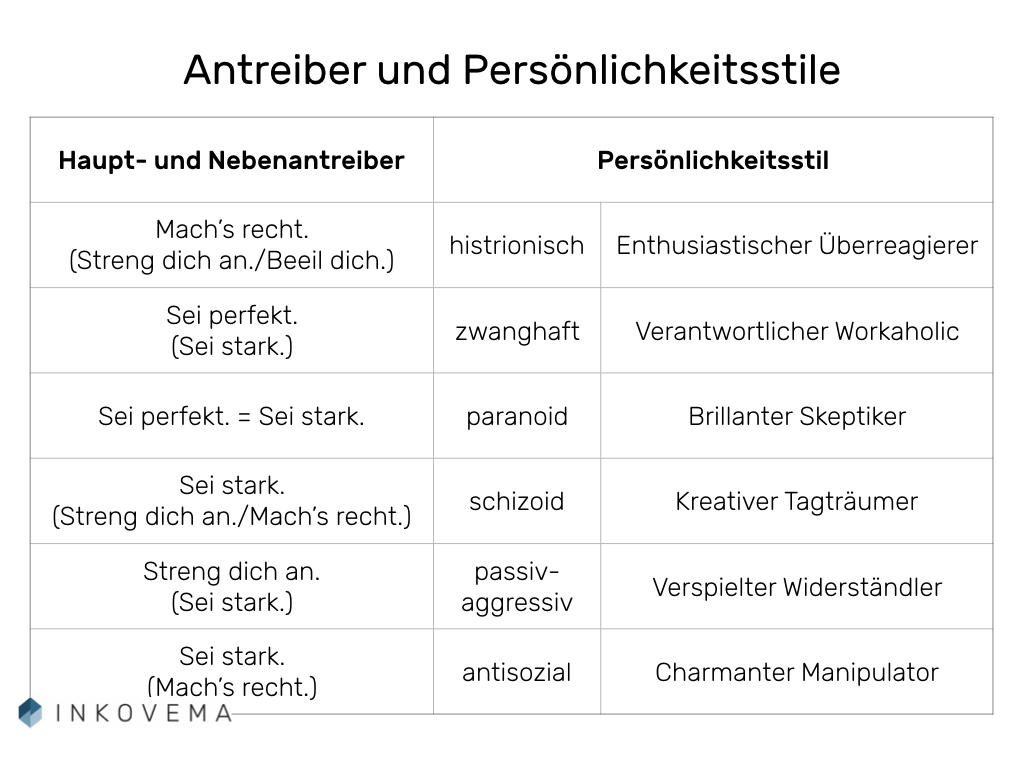Driver dynamics in the context of transactional analysis
The concept of drivers, which captures the origin and nature of driver behaviour and driver dynamics, only becomes fully clear in the context of other TA concepts. Therefore, in the third part of the blog post series, drivers are discussed in relation to the concept of
- of the Life scripts,
- the Basic settings,
- the Personality styles and
- the Miniscript (also provided by Taibi Kahler).
Driver and life script
Drivers are in the context of the life script Script messages just like the banishing messages. The life script is defined in transactional analysis as an unconscious life plan created from the interplay of environmental influences and childhood "decisions". In contrast to banishment messages, which have also led to script decisions, drivers are parental demands that should enable the child to cope with life. They provide direction, whereas ban messages are fixed. They command behaviour instead of directly forbidding it, which is why they are formulated positively, whereas ban messages are not. In this respect, they make ban messages "bearable", offer a way out and ensure life and growth on the condition that the drivers are followed as signposts. Their guiding effect does not only become apparent in such Combinations of drivers and ban messages, but already in the context of the fundamental Basic attitude to life.
Drivers and basic attitude to life
The concept of the basic attitude to life represents the relationships between "I" and "you", "ok" and "not ok" in a matrix. This gives rise to the four basic attitudes "I am ok, you are ok"; "I am ok, you are not ok"; "I am not ok, you are not ok" and "I am not ok, you are ok".
The influence of the drivers is not recognisable in this matrix. Nevertheless, they have a fundamental effect on the basic life position and influence the contents of the life script to the same extent. For Bald the drivers even represent a new basic life position – between the aforementioned basic positions, so to speak. In this sense, drivers express two conditional OK positions from.
On our own behalf
Drivers and personality styles
The five drivers correspond also with the principles identified in transactional analysis six personality styles. It should be noted that every personality style is accompanied by at least one secondary driver in addition to the primary or main driver.
Incidentally, the concept of personality styles was the subject of a fierce dispute in transactional analysis, which was ultimately settled between the protagonists T. Kahler and Ian Stewart and Vann Joines. This incident has now been settled and the parties involved have come to an agreement.
Driver and mini script
The mini-script model describes the process when the drivers do not lead to a solution and one's own script is activated in current behaviour, thinking and feeling and „shows itself to everyone“. While people are relatively free to choose their options in stress-free times, this range narrows considerably under stress and pressure. The Proven solutions do not work more. Then a sequence begins that is captured by the mini-script model and which, so to speak, condenses the life-spanning concept of the life script into a relatively short sequence.
The driver concept naturally also corresponds to the other TA concepts presented here, which we have omitted in our blog post. However, if you Questions and suggestions Please feel free to use our comments function to get in touch with us or exchange ideas with us. We are happy about Feedback and further suggestions on your part.







Leave A Comment